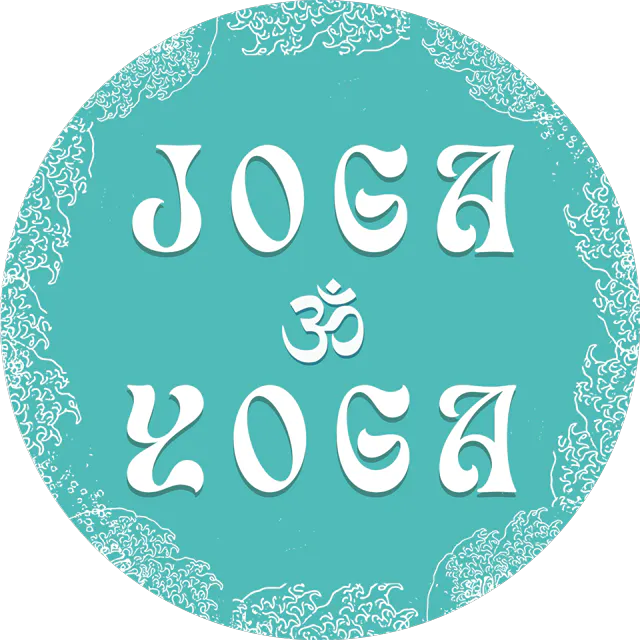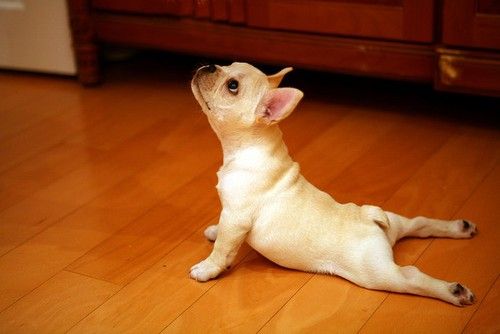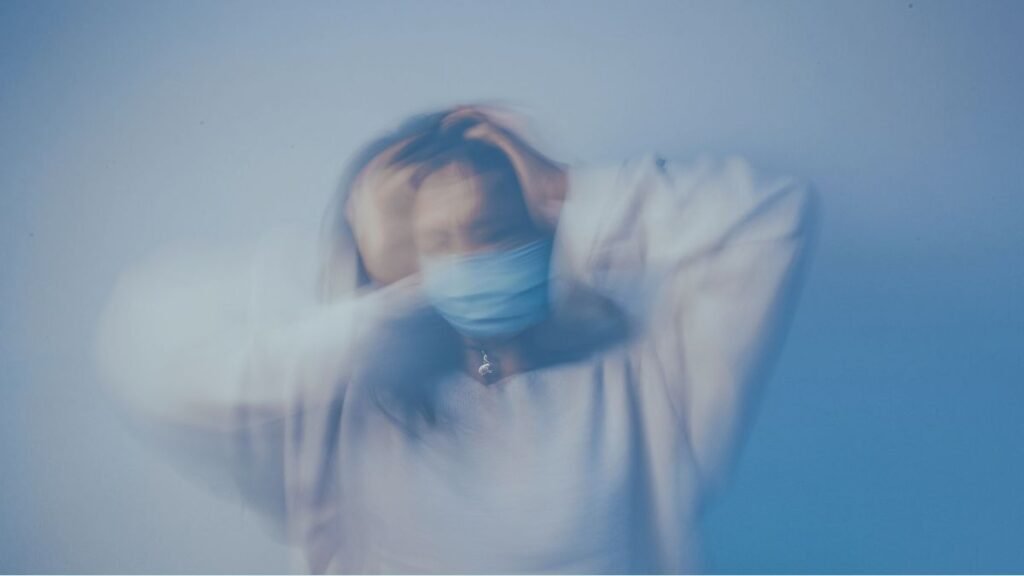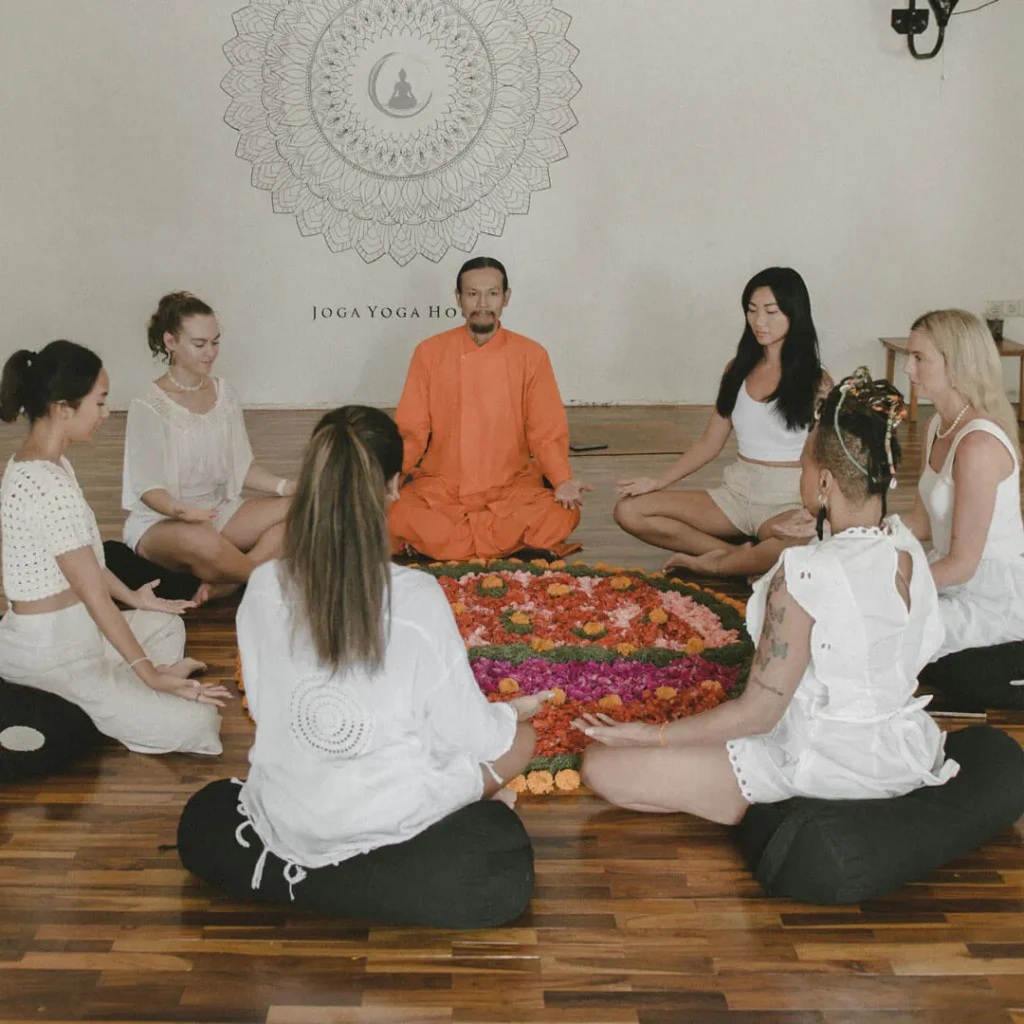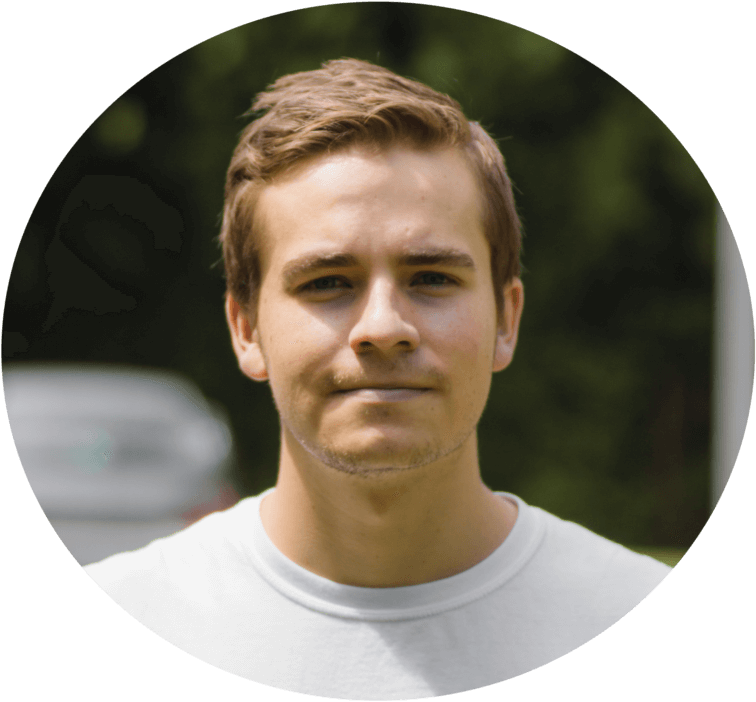Understanding Anxiety And Depression
Anxiety can feel like a fast, restless mind and a tight, jumpy body. Depression can feel heavy, slow, and empty. Both can disturb sleep, appetite, energy, and focus.
In the body, stress can show up as tight shoulders, shallow breathing, and a racing heart. When the breath is short, the mind often feels stuck in worry. When the chest is closed and the spine slumps, mood can drop.
Yoga helps because it brings the body, breath, and attention back together. Slow movement, safe shapes, and steady breathing tell the nervous system that it is safe to relax. If you want to learn how nerves and breath connect, read our guide on how yoga activates the vagus nerve.
How Yoga Helps Mental Health
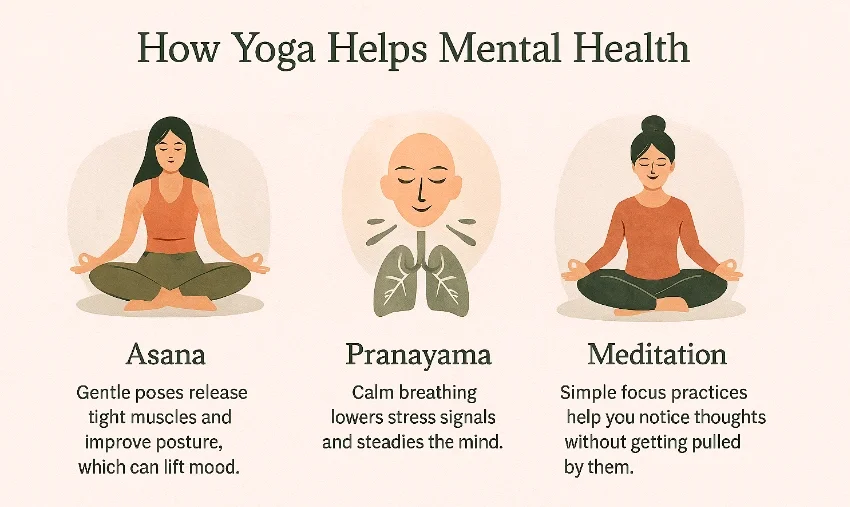
Yoga is more than stretching. It blends three tools that support mental health.
- Asana. Gentle poses release tight muscles and improve posture, which can lift mood.
- Pranayama. Calm breathing lowers stress signals and steadies the mind.
- Meditation. Simple focus practices help you notice thoughts without getting pulled by them.
Research shows that regular yoga can lower stress hormones and improve sleep. It can also increase feelings of calm and ease. For simple ways to begin, try a short practice from our guide to yoga meditation techniques. You can also explore soothing postures in our page on yoga for stress relief.
Getting Started Safely
Start small and be kind to yourself. The goal is not a perfect pose. The goal is steady breath and a calmer mind.
- Create a quiet spot. Roll out a mat and silence notifications.
- Move gently. Stay below pain. Use blocks, cushions, or a wall for support.
- Match movement with breath. Inhale to lengthen. Exhale to soften.
- Be consistent. Ten to fifteen minutes a day helps more than a long class once a week.
- Learn the basics. If you are brand new, read our step by step guide for beginner yoga.
- Get support. If symptoms are strong, work with a licensed professional. Yoga can support care, not replace it.
Best Yoga Poses For Anxiety Relief
Instead of learning dozens of poses at once, start with a few simple shapes. Each group below supports the mind in a different way.
Calming and Grounding Poses
- Child’s Pose (Balasana). Kneel, fold forward, and rest your head on the mat. This pose relaxes the back and helps you feel safe.
- Legs Up the Wall (Viparita Karani). Lie down with your legs resting up against a wall. This pose lowers stress and improves blood flow to the brain.
- Corpse Pose (Savasana). Lie flat, arms and legs relaxed. This pose trains the body to let go fully.
👉 If you often struggle with sleep, these poses pair well with routines from simple yoga poses for better sleep.
Heart-Opening and Energizing Poses
- Fish Pose (Matsyasana). Lying on your back, lift your chest and let the head drop back. This pose opens the lungs and encourages deeper breathing.
- Bridge Pose (Setu Bandhasana). Lying down, lift the hips upward. This counters slouching and brings energy.
- Camel Pose (Ustrasana). Kneel and reach your hands back to your heels. This opens the chest and invites emotional release.
👉 To go deeper into these shapes, see our guide on heart opening poses.
Stress-Relief Twists and Forward Bends
- Seated Forward Bend (Paschimottanasana). Sit tall, reach for your feet, and fold forward. This stretches the back and calms the mind.
- Supine Twist (Supta Matsyendrasana). Lying down, let both knees fall to one side. This releases tension in the spine.
- Happy Baby (Ananda Balasana). Lying down, grab your feet and gently rock. This stretches the hips and brings lightness.
Building Confidence and Focus
- Warrior I & II (Virabhadrasana I, II). Strong standing poses that build strength and inner steadiness.
- Tree Pose (Vrksasana). Balance on one leg, place the other foot on your thigh or calf, and join hands at your chest. This builds focus.
- Triangle Pose (Trikonasana). Step wide, reach one arm to your shin, the other arm to the sky. This lengthens the body and clears the mind.
Breathwork For Calming The Nervous System
Breathing is the quickest way to calm anxiety. Try these three techniques:
- Nadi Shodhana (Alternate Nostril Breathing). Use your fingers to close one nostril at a time as you breathe in and out. This balances both sides of the brain.
- Bhramari (Bee Breath). Inhale deeply, then exhale with a humming sound. This vibration soothes the nerves and quiets racing thoughts.
- Diaphragmatic Breathing. Place one hand on your belly. Inhale so the belly rises, exhale so it lowers. This signals safety to the body and lowers stress hormones.
Even five minutes of calm breathing can shift mood and bring relief.
Meditation And Mindfulness Practices
Yoga is not only movement. Sitting still and watching the mind is also powerful for anxiety and depression.
- Breath Awareness Meditation. Sit comfortably, close your eyes, and follow each inhale and exhale. If thoughts come, gently return to the breath.
- Body Scan Meditation. Lie down and bring attention to one body part at a time, from toes to head. This relaxes tension and teaches awareness.
- Mantra Practice. Repeat a simple word or sound, like OM, to focus the mind. This can create a sense of peace. For more, see our page on the sound of OM.
Practicing even a few minutes daily can help reduce overthinking and increase calm.
Lifestyle Tips For Mental Wellness
Yoga is one tool. Your daily habits also shape your mood and energy.
- Eat sattvic foods. Light, fresh, and natural meals support clear thinking. Avoid too much caffeine or sugar, which can make anxiety worse. 👉 Learn more in our guide to sattvic food.
- Prioritize sleep. A calm evening routine, gentle yoga, or meditation can improve rest. 👉 See our breakdown of morning vs evening yoga to build the right routine.
- Spend time in nature. Walking outdoors or practicing yoga outside reduces tension.
- Find community. Join a class or practice with friends. Connection supports healing. 👉 Check our yoga classes in Bali if you are nearby.
- Seek support when needed. Yoga helps, but it does not replace therapy or medical care. Reach out to a professional if your symptoms are heavy.
Conclusion
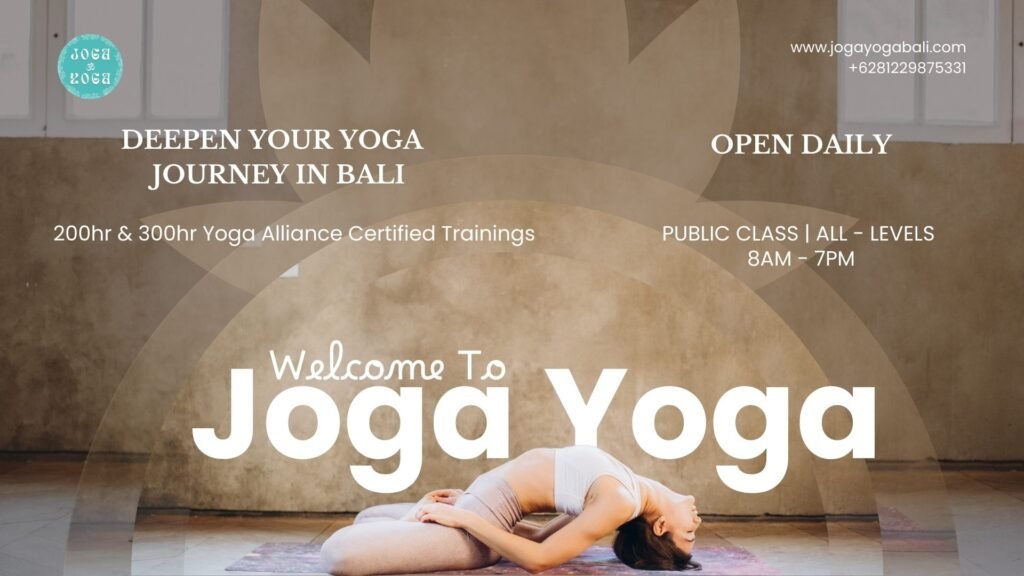
Yoga can bring relief from anxiety and depression by calming the body and steadying the mind. Start small with a few poses and breathing exercises, then build up a daily routine.
If you want a step by step plan, begin with short calming poses, add breathwork like nadi shodhana, and close with a few minutes of meditation. This simple practice can shift how you feel in just a few weeks.
To explore deeper, check out:
- Yoga For Stress Relief
- Yoga Meditation Techniques
- Yoga Teacher Training in Bali if you wish to study more and share yoga with others.
You are not alone. Yoga is here as a tool to guide you toward peace, clarity, and strength.
Frequently Asked Questions
Does yoga help with anxiety?
Yes. Studies show that yoga lowers stress hormones, slows breathing, and relaxes the body, which eases anxiety.
Which yoga pose is best for anxiety?
Legs Up the Wall and Child’s Pose are simple, calming poses that steady the breath and relax the mind.
How often should I do yoga for anxiety?
Even 10 to 15 minutes daily can make a difference. Consistency matters more than long sessions once in a while.
Is yoga good for stress and depression?
Yes. Gentle movement, breathwork, and meditation help release tension and balance mood.
Can yoga replace therapy?
No. Yoga supports mental health but should be combined with therapy or medical treatment when needed.
